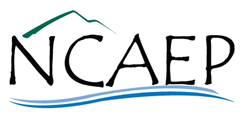Over the past several years, the U.S. Environmental Protection Agency and U.S. Fish and Wildlife Service have sponsored the development of a function-based framework document and workshop. The broad goal is to provide stream restoration and mitigation professionals with tools that can be used to improve restoration quality and make it easier to link restoration methods with functional improvements. The function-based framework lays out a simple pyramid structure that illustrates a functional hierarchy. The pyramid places hydrology functions at the base followed by hydraulics, geomorphology, physicochemical, and biology. A functional statement is provided for each of these categories. The pyramid shape illustrates that lower level functions are needed to support higher level functions, i.e., hydrology functions support hydraulic functions and so on. A more detailed illustration of the pyramid provides function-based parameters that can be used to describe the functions in each category. Next, a table is used to show a range of measurement methods that can be used to quantify the function-based parameters. Finally, where available, performance standards are provided for the measurement methods.
The function-based framework can then be used to improve project goal setting, develop function-based stream assessments, and develop stream mitigation debit/credit determination methods. Goal setting can be improved by focusing on the restoration of functions, rather than simply the restoration of channel geometry. For example, many restoration projects have a goal of restoring channel dimension, pattern, and profile. While this may be a necessary component of a project, this goal does not provide information about why the project is being pursued and what functions will be improved.
The framework can also be used to guide the development of function-based stream assessments. Parameters are selected based on the purpose of the assessment and the geographic setting. Then measurement methods and performance standards can be selected to yield quantitative outcomes related to “Functioning,” “Functioning-At-Risk,” and “Not Functioning” categories. These functional ratings can be assigned to the parameters, like floodplain connectivity, or rolled up to the category level, like hydraulics.
The last application is the use of the function-based framework as a tool for developing stream mitigation debits and credits. A variety of examples are shown that illustrates how the framework can be used to create debits and credits by showing functional loss and lift, respectively. Two levels of restoration are provided to show that some mitigation projects only restore geomorphology (Level 3) functions, while others may be able to show functional improvement in biology functions (Level 5).
Presenter: Will Harman, PG
DATE: 13 September 2012
Social Hour starting at 5 PM
Dinner at 6 PM
Speaker at ~6:30 PM
LOCATION: N.C. State University Club
4200 Hillsborough St.
Raleigh, NC 27606
http://ncsuclub.com/
If you have registered for the event and would like to request a vegetarian entree, please contact vicepresident@ncaep.org.
